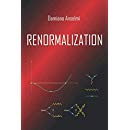Archive for November 2006
We prove the renormalizability of various theories of classical gravity coupled with interacting quantum fields. The models contain vertices with dimensionality greater than four, a finite number of matter operators and a finite or reduced number of independent couplings. An interesting class of models is obtained from ordinary power-counting renormalizable theories, letting the couplings depend on the scalar curvature R of spacetime. The divergences are removed without introducing higher-derivative kinetic terms in the gravitational sector. The metric tensor has a non-trivial running, even if it is not quantized. The results are proved applying a certain map that converts classical instabilities, due to higher derivatives, into classical violations of causality, whose effects become observable at sufficiently high energies. We study acausal Einstein-Yang-Mills theory with an R-dependent gauge coupling in detail. We derive all-order formulas for the beta functions of the dimensionality-six gravitational vertices induced by renormalization. Such beta functions are related to the trace-anomaly coefficients of the matter subsector.
Class. Quant. Grav. 24 (2007) 1927 | DOI: 10.1088/0264-9381/24/8/003
arXiv: hep-th/0611131

 Quantum Gravity
Quantum Gravity 


